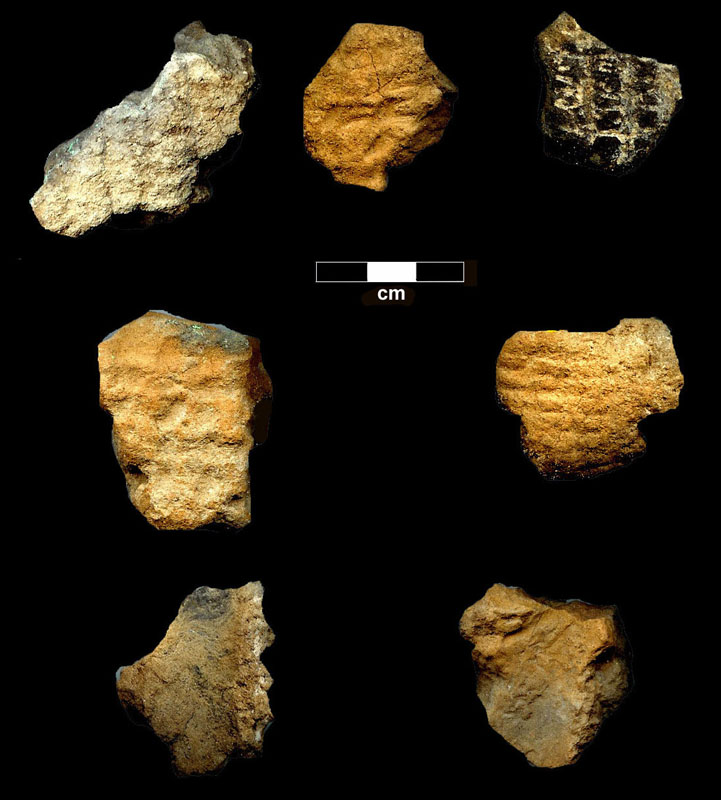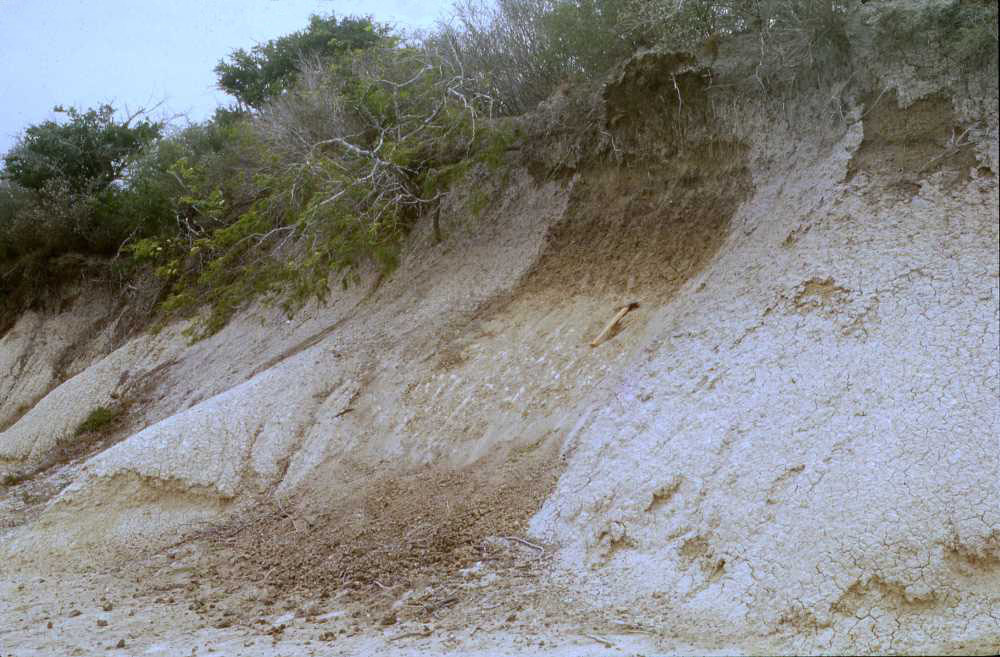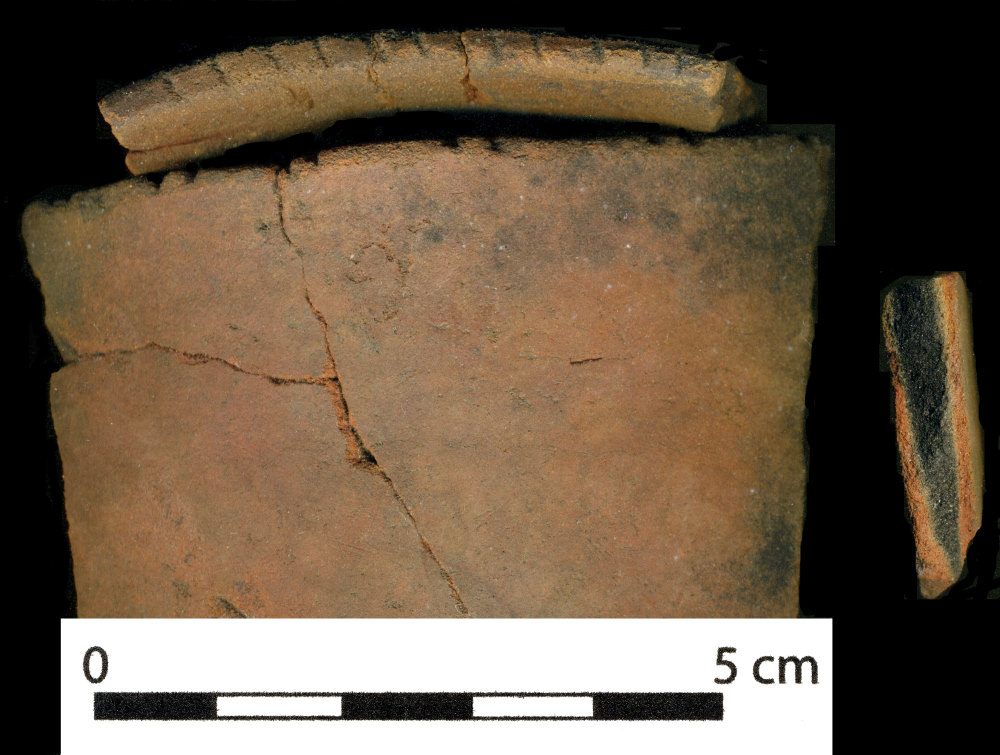Clay
Workable clay is found throughout the Prairies and Marshlands region with the sole exceptions of the barrier islands and the South Texas Sand Sheet (Coastal Sand Plains) along the lower coast. Native peoples used clay to make pottery and as daub to seal the walls of dwellings and sometimes basketry. Of these, pottery is the most durable and widely documented usage.
Nearly all coastal clays contain inclusions of calcium carbonate (CaCO3) and are classified as sandy-clays. To make pottery, coastal inhabitants would mix clay with water until it reached a workable consistency and, once the vessel had been shaped and allowed to partially dry, it was fired under relatively low heat, using piles of brush or animal dung as a controlled fuel source. Because most coastal clay was naturally sandy, no temper agent had to be added to the clay paste. However, grog (crushed pottery) or bone was sometimes added to temper the clay and, presumably, make the vessel walls stronger.
Pottery is relatively uncommon along the lower Texas coast south of Baffin Bay, but it is very common in the central and upper Texas coast. The earliest pottery is found along the upper coast and is thought to have been introduced from southern Louisiana and the Lower Mississippi Valley (LMV) some 2,000 years ago. Later upper coastal pottery is dominated by Goose Creek ware, a brown to gray sandy paste earthenware pottery of simple jar and bowl forms that is sometimes decorated by incised lines. This tradition is linked to the western Atakapan-speaking peoples such as the Akokisa Indians.
Along the central coast the Rockport ware tradition also has a sandy-paste but is typically less coarse (than Goose Creek pottery) and often decorated with asphaltum paint. Rockport pottery is sometimes slipped with a fine layer of light gray or white clay atop which are striking designs of black asphaltum. The idea of making black and white pottery may have been introduced from the Huasteca region along the Gulf coast of northeastern Mexico. The Rockport pottery tradition is associated with the Karankawa Indians.
Since clayey soils comprise the entire geological foundation of the Texas coast, sourcing clay is a daunting task. The Beaumont Formation is composed of fluvial and deltaic clays and sands deposited during the last interglacial period (i.e., during the Pleistocene). Other clay sources are also available in some areas. For example, archaeological investigations along the Trinity and Lavaca Rivers suggest that clay abandoned stream channels and flood basins have thick clayey soils which were used as insulating in wattle and daub for housing. In this construction method, coastal natives would tie together sticks and branches to form a frame and then cover this frame with clay and mud to seal any cracks. Finally, along the lower coast (from Nueces Bay south) are clay dunes, formations of wind-blown fine clay derived from tidal flats during periods of fluctuated sea level and prolonged drought.
![]()

|


